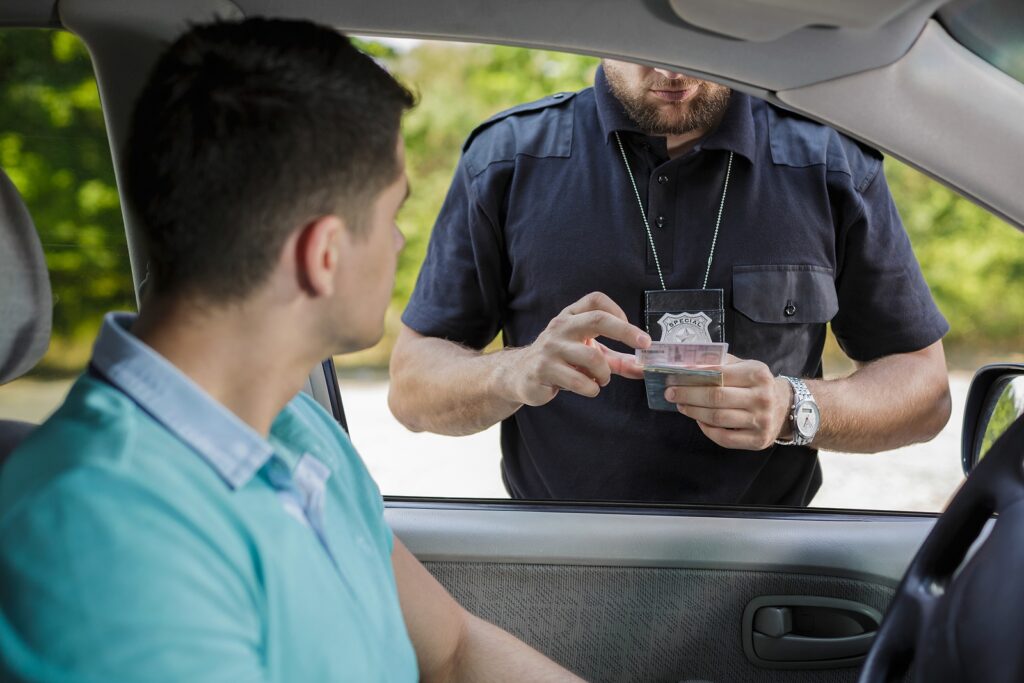If you’ve ever wondered how does TX DWI investigation work, you’re not alone. Whether it’s your first brush with the law, you’re a worried parent, or just someone trying to understand your rights, grasping how DWI investigations unfold in Texas is essential. The moment those flashing red and blue lights appear behind you, the situation quickly shifts from routine to serious. What starts as a basic traffic stop can escalate into a life-changing criminal charge—often within minutes.
This guide will walk you through the DWI investigation process in Texas from start to finish. You’ll see exactly how it moves from the initial stop, through field tests, chemical testing, and ultimately, an arrest. With real-world scenarios and clear analysis, you’ll gain a working understanding of how TX DWI investigations work and what that means for anyone caught in their scope.

What Triggers a DWI Investigation in Texas?
Reasonable Suspicion: The Legal Spark
The very first trigger in how TX DWI investigation works is something called reasonable suspicion. Officers aren’t allowed to pull you over just because they feel like it. Instead, they must witness a specific action or pattern that violates traffic laws or suggests potential impairment.
Here are common red flags that lead to traffic stops:
- Swerving across lane markers
- Driving unreasonably slow or too fast
- Ignoring traffic signals
- Making erratic or wide turns
- Failing to turn on headlights at night
Once the officer initiates a stop, their primary goal becomes determining whether probable cause exists to believe you’re driving under the influence of alcohol or drugs. That suspicion sets the rest of the process into motion.
The Initial Approach: What Officers Look For
Observations Through the Window
When the officer approaches your vehicle, they aren’t just there to ask for your license and registration. This initial contact doubles as a critical part of the TX DWI investigation process. Officers begin scanning for signs of intoxication from the second you roll down your window.
What are they looking for?
- The strong smell of alcohol
- Slurred or delayed speech
- Red or watery eyes
- Visible open containers
- Nervous, inconsistent behavior
Even your tone of voice or fumbling through your wallet can raise suspicion. If enough behavioral or physical cues stack up, the officer may ask you to step out of the car to continue the investigation. What seems like a casual conversation might already be laying the groundwork for a DWI case.
Step One: The Field Sobriety Tests (FSTs)
The Physical and Cognitive Road Test
Next comes the field sobriety test phase—one of the most recognizable aspects of any DWI stop. You’ve probably seen it in movies or roadside footage. These tests help officers collect evidence of impairment in a structured way. But here’s what most drivers don’t know: these tests are voluntary, and officers aren’t required to tell you that.
If you’re trying to understand how does TX DWI investigation work at this stage, here’s what you’re likely to face:
- Horizontal Gaze Nystagmus (HGN) Test: The officer asks you to follow a moving object with your eyes. Jerky eye movements, especially at the edges of your gaze, can indicate alcohol impairment.
- Walk and Turn Test: You walk a straight line heel-to-toe, then pivot and return the same way. The test measures your balance, focus, and ability to follow complex instructions.
- One-Leg Stand: You’re asked to lift one foot off the ground and count aloud while keeping your balance. Swaying, hopping, or putting your foot down may count against you.
These tests are highly subjective, and outside factors—like bad knees, uneven pavement, or anxiety—can easily throw off results. Nevertheless, they play a big role in how DWI charges are built in Texas.
Step Two: The Breath or Blood Test
Chemical Testing for BAC
If the officer believes there’s enough probable cause based on the field tests and prior observations, the next step in the DWI investigation is chemical testing. Under Texas’s implied consent law, you automatically agree to this kind of testing by choosing to drive on Texas roads.
Here’s what happens in this part of how TX DWI investigation works:
- Breath Test (Breathalyzer): Officers use a device to estimate your BAC based on your breath. The device must be maintained and calibrated routinely. Improper calibration can yield incorrect results.
- Blood Test: This is more precise than a breath test but typically requires a warrant or consent. Blood tests are often used when breath tests are refused or when officers suspect drug use.

Refusing either test comes with immediate administrative consequences. Your license could be suspended for up to 180 days—even if you’re never convicted in criminal court. Plus, officers can often get a judge to approve a blood draw warrant within minutes.
Real-Life Story: Samantha’s Surprise Arrest
Let’s put this into perspective with a true-to-life scenario. Samantha, a 32-year-old teacher from Fort Worth, got pulled over for a broken taillight. She had one glass of wine with dinner and didn’t feel impaired at all. The officer said her eyes looked watery and her speech slightly slow. Samantha cooperated with the field sobriety tests, passing the walk-and-turn and one-leg stand, but failed the HGN.
When she took the breath test, it read 0.08—the legal limit. That result led to her immediate arrest. A later blood test showed her BAC was 0.075, but it was too late. Her license was already suspended, and she had to hire a lawyer and appear in court multiple times.
Samantha’s case is a clear example of how TX DWI investigation works and how even borderline results can lead to life-altering consequences.
Arrest and Booking: What Happens Next
The Ride to Jail
Once an officer believes there’s probable cause, you’ll be placed under arrest. You’ll be:
- Handcuffed
- Read your Miranda rights
- Transported to a local jail or holding facility
- Booked and fingerprinted
- Held until bail is posted or you’re released on your own recognizance
If this is your first offense, you may be eligible for a PR (personal recognizance) bond, but repeat offenses usually come with higher bail amounts.
The arrest and booking process is one of the most intimidating parts of how TX DWI investigation works, especially for those who’ve never encountered the legal system.
The Administrative License Revocation (ALR) Hearing
Your Other Legal Battle
In addition to your criminal case, Texas has a separate administrative process: the ALR hearing. This is triggered if:
- You refuse a chemical test, or
- You fail it (i.e., blow above 0.08)
You have only 15 days from the date of arrest to request an ALR hearing. If you miss that window, your license will be suspended automatically.
At the ALR hearing, your attorney can cross-examine the arresting officer and challenge the legitimacy of the stop and the test results. Winning here won’t dismiss your criminal case, but it can help you keep your license.

Understanding this part is critical in grasping the full scope of how TX DWI investigation works, as many people don’t realize they’re facing two separate battles: criminal and administrative.
Building a Defense: Why Early Action Matters
Evidence Can Work Both Ways
If you’ve been arrested for DWI in Texas, the clock is ticking. Evidence that can be used against you—dashcam footage, chemical test results, officer notes—can also work in your favor.
Your attorney can request:
- Bodycam or dashcam video
- Maintenance logs for the breathalyzer
- Training records for the arresting officer
- Witness statements
The sooner you act, the better your chances of preserving valuable information. The defense begins the moment you’re stopped, not when you’re in front of a judge.
Knowing how to challenge elements of the investigation is one of the most powerful tools in understanding how TX DWI investigation works.
Penalties for DWI in Texas
What You’re Up Against
A DWI conviction in Texas carries serious penalties, even for first-time offenders:
- Jail time: 72 hours to 180 days
- License suspension: 90 days to 1 year
- Fines: Up to $2,000
- Annual surcharge: Up to $2,000 per year for 3 years
- Mandatory alcohol education class
- Ignition interlock device for repeat offenders
Penalties increase significantly if your BAC was over 0.15, if there was a child passenger in the vehicle, or if the incident involved a crash or injury.
This is why it’s so vital to understand how TX DWI investigation works—because the consequences aren’t just legal. They affect your job, finances, and even your family life.
Can You Refuse Everything? Knowing Your Rights
To Refuse or Not to Refuse?
You have the right to refuse field sobriety tests, and doing so cannot be used against you in court. However, refusing a chemical test (breath or blood) triggers automatic license suspension under Texas’s implied consent law.
Here’s the breakdown:
- Refuse FSTs? Yes, with little legal penalty
- Refuse to speak without a lawyer? Absolutely—and you should
- Refuse breath/blood test? Yes, but you’ll likely lose your license

Knowing what you can and cannot refuse is a vital part of understanding how TX DWI investigation works. Sometimes, silence is your best defense.
Final Thoughts: How TX DWI Investigation Works Is About More Than Just Tests
It’s easy to think a DWI case in Texas comes down to a single breath test or a few minutes of field sobriety exercises. But the reality is, the process is much more nuanced—and filled with both pitfalls and opportunities.
From the moment you’re pulled over, officers are building a case. But you also have rights—and options. The key is knowing how TX DWI investigation works and using that knowledge to protect yourself.
Because in the eyes of the law, what you don’t know can hurt you. But what you do know? That could be the very thing that saves you.

